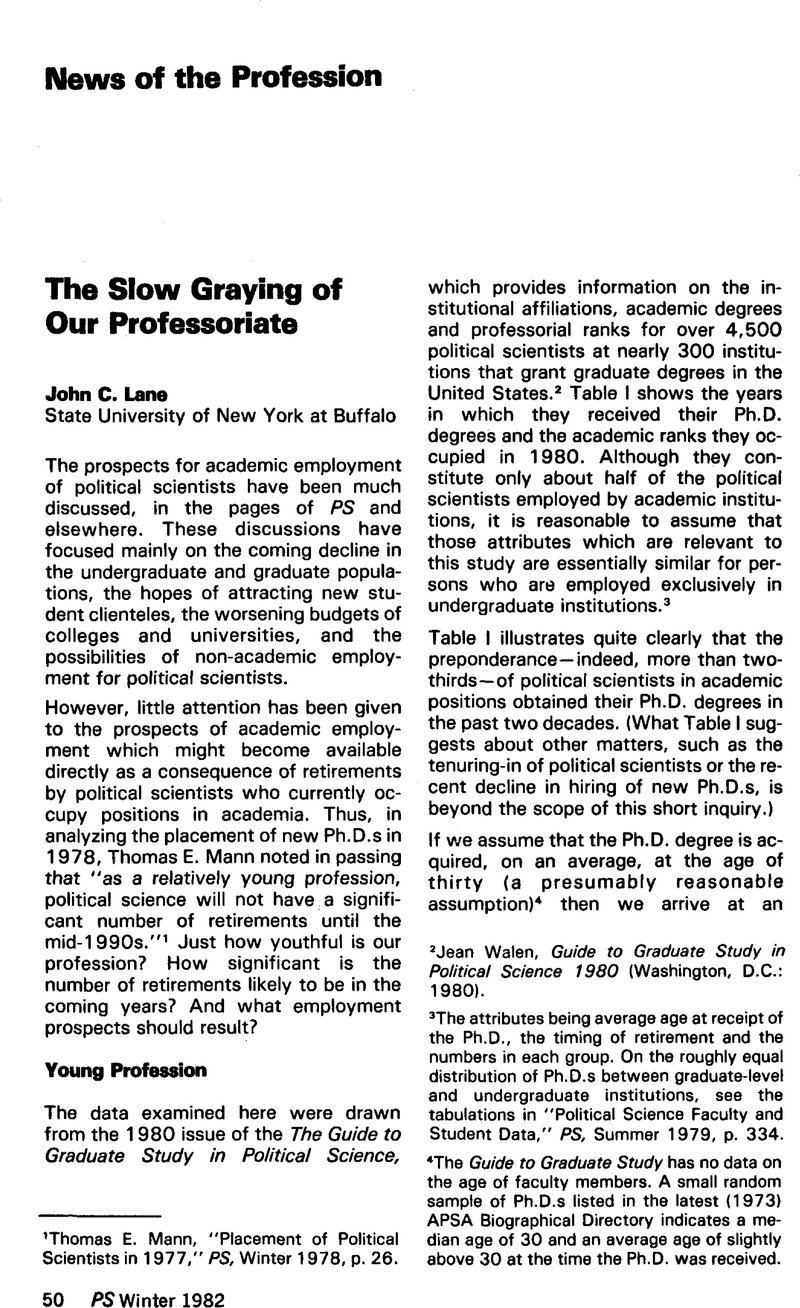Published online by Cambridge University Press: 25 November 2022

1 Mann, Thomas E., “Placement of Political Scientists in 1977,” PS, Winter 1978, p. 26 Google Scholar.
2 Walen, Jean, Guide to Graduate Study in Political Science 1980 (Washington, D.C.: 1980)Google Scholar.
3 The attributes being average age at receipt of the Ph.D., the timing of retirement and the numbers in each group. On the roughly equal distribution of Ph.D.s between graduate-level and undergraduate institutions, see the tabulations in “Political Science Faculty and Student Data,” PS, Summer 1979, p. 334 Google Scholar.
4 The Guide to Graduate Study has no data on the age of faculty members. A small random sample of Ph.D.s listed in the latest (1973) APSA Biographical Directory indicates a median age of 30 and an average age of slightly above 30 at the time the Ph.D. was received.
5 Report of the Special Committee on Age Discrimination and Retirement, “The Impact of Federal Retirement-Age Legislation on Higher Education,” AAUP Bulletin, September 1978, p. 182 Google Scholar.
6 On institutional strategies, ibid., pp. 187-191.
7 See, for instance, “Professors Plan to Delay Retirement When New Law is Applied to Them,” Chronicle of Higher Education, September 15, 1980, p. 12 Google Scholar.
8 “In the late 1970s,” reports Sheilah Mann, “the decline in the supply of political scientists has levelled off.” The number of new Ph.D.s stood at 85 1 for the academic year 1977/78, down from a peak of 911 in 1970/71. See Mann, Sheilah K., “Placement of Political Scientists, 1978–79,” PS, Winter 1980, p. 10 Google Scholar.
9 Jack L. Walker has written that “at present 2 percent (150-170) persons of the political science faculty are leaving their positions each year to take permanent non-academic jobs.” Walker, , “Challenges of Professional Development for Political Science in the Next Decade and Beyond,” PS, Fall 1978, p. 488 Google Scholar. On opportunities and problems of increasing migration of political science Ph.D.s into non-academic positions, see Hargrove, Erwin C., “Can Political Science Develop Alternative Careers for its Graduates?”, PS, Fall 1979, pp. 446–450 Google Scholar.